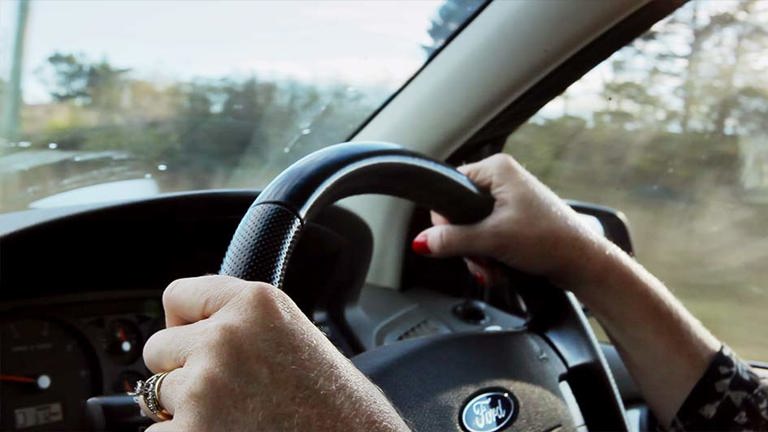It’s happened to many of us. One minute you’re driving along without a care in the world, and the next, you’ve got car problems. You pull over on the side of the road, wondering how to fix the flat tyre, broken headlight bulb or dead battery – or how much it’s going to cost to get someone to do it for you.
As the cost of living rises, maintaining your car can be one area where you might be able to cut back on spending, using the tips below. (Having adequate and appropriate car insurance might also be a way to help prepare for unexpected expenses.)
According to the Australian Bureau of Statistics, living costs rose by between 5.3% and 9% over the 12 months to the September 2023 quarter, with transport costs one of the main contributors to quarterly rises.1 Furthermore, Canstar estimates Australians pay an average of $1,637 per year on car servicing and maintenance alone.2
The good news is, with the right knowledge and tools, there are some car problems that you might be able to fix yourself – but always contact a professional if you’re unsure.
Flat tyre repair
Knowing how to change a flat tyre is a handy life skill and – with the right tools and knowledge – could be something you could do yourself if necessary.
The team at Digicall Assist, which provides roadside assistance to Youi Comprehensive car insurance holders,3 say it’s important to carry the right equipment with you when you travel. To replace a flat tyre, you’ll usually need the following:
- A spare tyre
- A car jack (to raise the car)
- A wheel brace or lug wrench (to undo the wheel nuts)
- A lock-nut adaptor
- The owner’s manual for guidance.
Before you attempt to change a flat tyre, the Digicall Assist team suggest finding a safe place to stop. You want to be out of the way of passing traffic, and on a surface that’s flat and firm enough to support the jack.
Once you’ve found a safe spot, turn your hazard lights on and leave them on while you’re changing the tyre. If you have a warning triangle, you can also put this out for extra visibility.
Digicall Assist advises that, if you’re in an area such as a freeway or other high-speed traffic area, it’s best to remain in your car and call roadside assistance as your vehicle might need to be towed to safety before changing the tyre.
Jump-starting or replacing a dead car battery
There aren’t many sounds more disappointing than the tick-tick of the ignition due to a dead car battery. According to the Digicall Assist team, most batteries last around three to five years, but if you’ve experienced a dead car battery before, you’ll know the timing is rarely convenient.
If your car was built before 2000, it may be possible to jump-start your battery; for newer cars though, jump-starting the engine with cables connected to a running vehicle can create a voltage surge that may damage expensive on-board computer systems.4 If your car is a newer model, you may prefer to contact a professional or use roadside assistance, if that’s included in your car insurance.
If you do decide to jump-start the battery, you’ll need the following:5
- A set of jumper cables
- A screwdriver (to remove battery terminal covers)
- Another car with the same battery voltage as yours.5
Car and Driver magazine advises that the first step is to park the two cars nose to nose. Next, turn off the engine in the vehicle with the good battery, and pop both bonnets. Find both batteries and check that the battery terminals are marked with a ‘+’ and a ‘-’ sign.5
Making sure none of the jumper cable clamps touch one another, attach the red clips of the jumper cables to the positive terminals of each battery (yours first). Then, attach one black clip to the negative terminal of the second car’s battery, and the final black clip to an unpainted, metal part of your vehicle that’s as far away from the battery as possible.5
Start the engine of the car with the good battery and let it idle for a few minutes before attempting to start your vehicle. If it doesn’t start on this first attempt, leave the other vehicle to idle for 10-15 minutes before trying again.5
If your car does start, leave it running while you disconnect the cables. Remove the negative clamp from the bare metal connection first, followed by the red clamp from your battery’s positive terminal, making sure the clamps don’t touch.5
If your car still doesn’t start, it might be a sign your battery needs replacing. And, as with all these tips, contact a professional if you don’t feel comfortable or confident doing a jump-start yourself.
Replacing your windscreen wiper blades
When a squeaky noise – or the inability to see through a sudden downpour – indicates it’s time for new wiper blades, you may be able to swap them over yourself. To do so, you’ll usually just need a pair of replacement blades, widely available at auto retailers.
To remove the old blades, WhichCar? advises lifting them away from the windscreen and depressing the clip which allows you to pull the blade down the wiper arm.6
Using a similar motion, you can slide on the new blade and click it into place. Fold the wiper back onto the windscreen and you’re done.6
Replacing a headlight bulb
A headlight bulb can fizzle out at any time and on some cars, it’s something you might be able to fix yourself. On others, you might need to remove the headlight assembly, a job that’s probably better left to an expert.
Your car owner’s manual will likely contain instructions for the correct procedure for changing a headlight bulb in your car, but if you’d like more specific directions, you’ll find a useful outline from carsales here.
Hopefully, these tips will come in useful next time you encounter these common car problems, so you can get back on the road in no time. You can learn more about Youi Roadside Assist3 and other Youi Comprehensive car insurance inclusions here.
1 Source: Australian Bureau of Statistics – Selected Living Cost Indexes, Australia, 2023
2 Source: Canstar – Cost of owning a car in Australia, 2023
3 Youi Roadside Assist included with Comprehensive cover only. Exclusions, limits and additional fees may apply. Cover not available within first 24 hours of taking out, or upgrading to, Comprehensive cover. See the T&Cs and PDS for full details.
4 Source: The Family Handyman Magazine – Is It Safe to Jumpstart a Modern Car?, 2023
5 Source: Car and Driver – How to Jump-Start Your Car, 2023
6 Source: WhichCar? – How to change windscreen wipers, 2020





